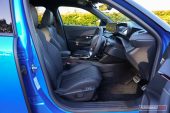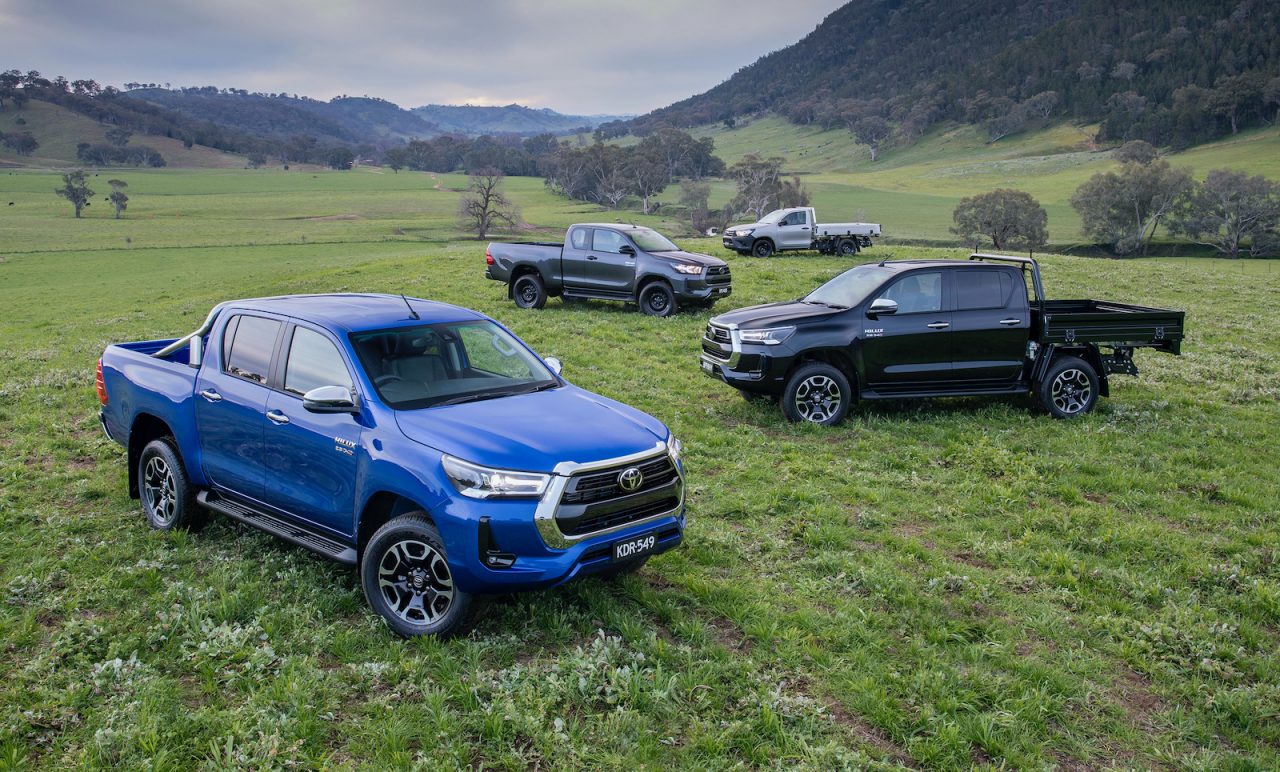The small SUV market is one of the toughest markets to conquer. Drivers demand small SUVs to be good at the widest variety of characteristics of any vehicle type; nimble to drive, roomy, comfortable, adventurous, sporty, and luxurious. That’s why Peugeot had to do something radical to turn around dismal sales of the first-generation 2008.
The second-gen 2021 Peugeot 2008 is all new from the ground up. A new platform, fresh design, and so much more modern inside. Sales are already starting to reflect that, with 303 sold in Australia so far this year (through July), up 352 per cent on the same period last year. But the competition is tough, and in most cases more affordable. It goes up against the likes of the Hyundai Kona, Kia Seltos, Mazda CX-30, and Toyota C-HR.
In Aus buyers can choose from three variants; the Allure, the recently-added GT, or the GT Sport at the top. All variants are matched to a 1.2-litre, turbo-petrol three-cylinder engine that drives the front wheels only. However, there are two different tunes and transmissions. The Allure and GT go with 96kW and 230Nm, paired to a six-speed auto, and the GT Sport is bestowed with 114kW and 240Nm, paired to an eight-speed auto.
Prices start from $34,990 for the Allure, $38,990 for the GT, and from $43,990 for the top-spec GT Sport (excluding on-road costs). Here, we’ve spent two weeks testing the GT and GT Sport (both in Vertigo Blue, just to make things confusing).
2021 Peugeot 2008 GT – THE SPECS
[column width=”47%” padding=”6%”]Engine: 1.2-litre turbo-petrol three-cylinder
Output: 96kW@5500rpm / 230Nm@17500rpm
Transmission: Six-speed auto
Drive type: Front-wheel drive
Wheels: F & R: 17×6.5, 215/60
ANCAP: Not tested
Tare weight: 1224kg
Power-to-weight: 12.75:1 (kg:kW)
Official fuel economy: 6.5L/100km
Economy during test: 7.5L/100km
Fuel capacity/Type: 44L/95 RON[/column] [column width=”47%” padding=”0″]Power efficiency: 14.76kW:L/100km
0-60km/h: 4.31 seconds*
0-100km/h: 9.45 seconds*
60-110km/h: 6.80 seconds*
1/4 mile: 16.82 seconds at 134.6km/h*
Max acceleration: 0.612g
100-0km/h braking: 2.93 seconds at 37.92 metres*
Max deceleration: -1.201g
Decibel at idle: 43*
Peak decibel at 60-100km/h: 79*
Priced from: $38,990[/column][end_columns]
2021 Peugeot 2008 GT Sport – THE SPECS
[column width=”47%” padding=”6%”]Engine: 1.2-litre turbo-petrol three-cylinder
Output: 114kW@5500rpm / 240Nm@17500rpm
Transmission: Eight-speed auto
Drive type: Front-wheel drive
Wheels: F & R: 18×7.0, 215/55
ANCAP: Not tested
Tare weight: 1264kg
Power-to-weight: 11.08:1 (kg:kW)
Official fuel economy: 6.1L/100km
Economy during test: 7.4L/100km
Fuel capacity/Type: 44L/95 RON[/column] [column width=”47%” padding=”0″]Power efficiency: 18.68kW:L/100km
0-60km/h: 4.05 seconds*
0-100km/h: 8.67 seconds*
60-110km/h: 6.16 seconds*
1/4 mile: 16.41 seconds at 140.8km/h*
Max acceleration: 0.635g
100-0km/h braking: 2.93 seconds at 37.21 metres*
Max deceleration: -1.231g
Decibel at idle: 43*
Peak decibel at 60-100km/h: 79*
Priced from: $43,990[/column][end_columns]
* Figures as tested by PerformanceDrive on the day. Factory claims may be different
2021 Peugeot 2008 GT Sport & GT – THE PACKAGE
One of the most significant changes for the Spanish-built Pug 2008 would have to be its completely revamped external design. The first-gen looked boring and overweight. Now, it looks like an agile, athletic, and well-proportioned SUV. It is also 142mm longer, 31mm wider, 6mm taller, and 47mm higher off the ground. The front end looks world’s more aggressive with huge fanged daytime LED lights and a cascading dotted grille. Glossy black elements, tri-stroke LED headlamps and a bonnet line that frowns at you make the 2008 look mean and modern.
We love the sharp indented creasing on the doors as they cast shadows and add to the SUV’s appeal. The contrasting glossy black elements continue through to the rear, ending at a sporty black upper rear pillar. The high sitting rear LED lights mould into one long shape across the boot, and they appear from the mysterious shadows of dark-tinted taillamps. Unpainted lower bumper plastics, a brushed chrome boot scuff plate and chrome dual exhaust tips give off a rugged vibe. Overall, we think it looks brilliant.
That French élan continues on the inside, with fixtures and technologies that are a pleasure on the eye. Materials look and feel high in quality, like the carbon fibre look wrapped dash, rounded edges that perfectly blend into the door trim, green stitching in the sports seats, eight-colour ambient lighting, pronged buttons in the centre fascia, and the brushed stainless-steel components, to name a few.
You also get a 10-inch touch-screen display that is crisp and vibrant on both the GT and GT Sport, and all controls, including the air-conditioning settings run through this touch-screen. It is a little annoying as there is extra button pressing and distraction from the road to get to common adjustments.
The most eye-catching item has to be that fully digital 3D instrument cluster. It is made up of a specially angled display that projects a second layer of info in front of less important info on the main display. It looks infinitely better than it sounds; and it actually helps to quickly grasp that more important info. We think it looks remarkably modern, and it significantly lifts the perceived value of the car (the 3D effect doesn’t really show in photos).
In terms of space and usability, the interior offers a generous amount of wriggle room for this category in the front, but it is a bit squashy in the back. There is an adequate amount of shoulder and legroom up front for long journeys. It helps the that steering wheel is tiny (Peugeot calls it i-Cockpit), so the space around you feels bigger. The idea here is to have the steering wheel adjusted low so you can see the cluster over the top of the steering wheel, instead of through the middle of the steering wheel. It worked for this reviewer, but it may not suit all body heights and shapes.
There are also lots of storage areas to store items, and the cup holders are decently sized. We found the dash storage shelf that flips down to double as a mobile phone holder very nifty. On the GT and GT Sport this padded platform is a wireless charger as standard.
But there is always room for improvement too. For example, the centre console is small – it won’t fit a cube-shaped tissue box. Also, the roof handles feel like they are not strongly secured to the ceiling – there is a lot movement when grabbed. An unexpectedly tall and wide door sill on entry/exit makes for more effort getting in and out. There is no rear centre armrest or rear air vents. And lastly, the touch sensor on the outside door handles too often does not pick up your touch to lock/unlock the doors (it could have be a flattening battery in the key fob).
If boot space is vital to you, the 2008’s boot fits a healthy 434 litres of luggage. It can be expanded to 1467 litres when the rear seats are folded down. For comparison, the Mazda CX-30 measures 422L and the Kia Seltos is 433L. The space is a tad narrower than its competitors because the side panels that enclose the rear wheel arches rise up to the roof. Other SUVs open wider above the wheel arches.
All 2008 models inherit a generous list of safety tech and features as standard. You get forward collision warning and mitigation with pedestrian detection, active cornering fog lamps, active lane keeping aid, road sign recognition, power-folding and heated door mirrors, rain-sensing wipers, electric antiglare and frameless rear-view mirror, a starter button, Android Auto and Apple CarPlay, and tyre pressure monitoring.
But you need to upgrade to the GT to receive items like that customisable ambient lighting, active blind-spot sensors, proximity key central locking, sat-nav, auto high beam, and upgraded sports seats. It is not until you opt for the GT Sport that you receive 18-inch alloys, distance-controlled cruise control, that more powerful engine tune with selectable driving modes, a massaging electrically adjustable driver’s seat (optional on the GT as well), Nappa leather, and auto steering parking assistance.
Peugeots and the 2008 come standard with a five year/unlimited kilometre warranty and five years of free roadside assistance. Servicing is required every 12 months or 15,000km (whichever comes first).
2021 Peugeot 2008 GT Sport & GT – THE DRIVE
Three-cylinder engines are rising in popularity to help reduce emissions and fuel consumption. But do they compromise on performance? Well, the 2008’s three-cylinder engine is a fun and lively one. And it sounds gutsy when pushed. Obviously, we’re going to favour the more powerful GT Sport tune. It provides that little bit of extra oomph when the road and traffic flow opens up.
Really, it should be the standard engine across the board, especially when comparing power outputs to the competitors. There is a decent amount of torque from both tunes thanks to the turbo. We timed 0-100km/h in 9.45 seconds in the GT, and 8.67 seconds in the GT Sport. Peugeot claims 9.3 and 8.7, respectively.
Fuel consumption is not at the levels we were expecting. And it’s not like the 2008 has four wheels to power, either. Officially, the base tune burns 6.5L/100km. But we couldn’t achieve lower than 7.5L/100km. Our test was biased more towards relaxed highway speeds too. Oddly, the higher performance tune claims a lower official average of 6.1L/100km – you’d expect it to be the other way around. Our average was 7.4L/.100km.
Average emissions are 148g/km in the base tune and 138g/km in the GT Sport tune. We think it’s disingenuous for Peugeot to alter the fuel consumption and emissions via only a different tune. Essentially, you need to pay extra to be kinder to the environment even though you’re getting the same size engine.
On the road, the 2008 feels zippy and light to drive. In fact, it only weighs between 1224 and 1264kg (tare). It also helps that the steering is incredibly light, and the steering wheel is small. So, it’s super-easy to throw around on a mountain pass or in a tight carpark.
The suspension can struggle to keep up with those fast turns and sensitive steering in our opinion. The GT Sport is rewarded with lower profile Michelin tyres, but it is barely noticeable. Lateral dynamics feel supportive, but vertical bounce is a bit pogo-stick-like. Up front are MacPherson struts with a torsion beam axle at the rear.
Nonetheless, it’s still a fun small SUV to drive, and it absorbs nasty holes effectively. Even if you bounce higher in your seat than you might expect. Sadly, there is no option of all-wheel drive so only light off-road duties are recommended.
2021 Peugeot 2008 GT Sport & GT – THE VIDEO
2021 Peugeot 2008 GT Sport & GT – THE VERDICT
Worlds apart from the first-generation model, the 2021 Peugeot 2008 has lots to rave about. Its external design is among the most modern and striking of all the competition. And it flows inside too. There are many elements that make it a class-leader in terms of interior quality and overall aesthetic merit.
There are just two main issues for us. High fuel consumption (for the engine size and performance), and the high-end price tag. Anecdotally, the small SUV market is not traditionally interested in spending up big on these types of vehicles. If drivers have money to spend, they will likely spend it on a bigger or luxury SUV. If the price came down a bit, we think this could be a very hot item.
[column width=”47%” padding=”6%”]PROS:
– Exceptionally quiet interior
– Brilliant 3D instrument cluster
– Aggressive and modern design that looks different to the rest
– Energetic and fun driving character overall[/column] [column width=”47%” padding=”0″]CONS:
– Very expensive for this class
– Not as fuel efficient as the specs suggest
– No rear armrest or rear air vents
– Intrusively high door sill, can trip on entry/exit[/column][end_columns]
As always, if you’re thinking about buying a new car don’t forget to click here to speak with our car buying specialists.



































